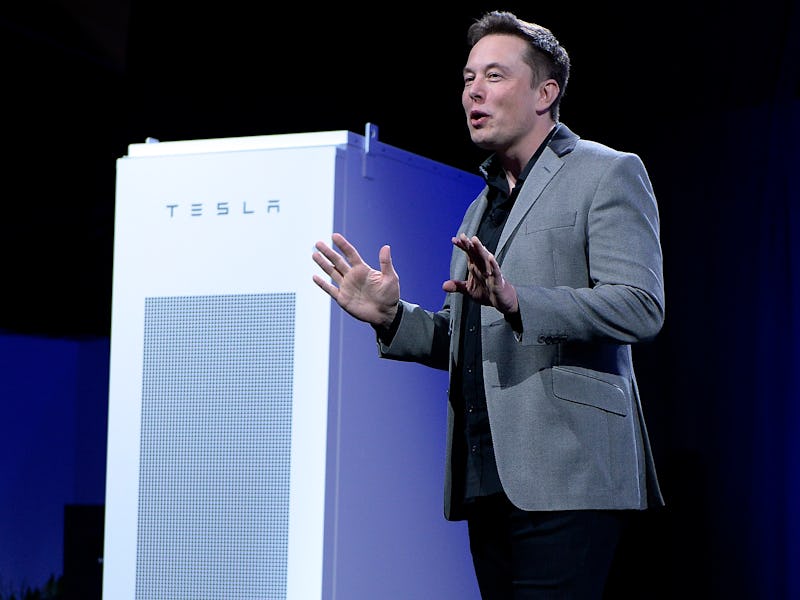Tesla Eyes the Largest Battery Storage Project in the World

Tesla has until the end of the year to create a battery storage system that can help support a more reliable electrical grid to 15 million people in California.
The company announced Thursday night that it was selected through a competitive bidding process to build a 20 MW/80 MWh Powerpack system for the Southern California Edison Mira Loma substation. This will be the “largest lithium-ion battery storage project in the world,” Tesla says, assuming it’s fully operational by its coming deadline of December 31, 2016.
Tesla doesn’t think that will be a problem: It says the Gigafactory it opened in the Nevada desert earlier this year will “allow this system to be manufactured, shipped, installed and commissioned in three months.” If the company has already started work on the project, that means it could beat its deadline by a couple of weeks, assuming there are no hiccups in that time.
“The system will charge using electricity from the grid during off-peak hours and then deliver electricity during peak hours to help maintain the reliable operation of Southern California Edison’s electrical infrastructure which feeds more than 15 million residents,” Tesla explains in its blog post about the project. “By doing so, the Tesla Powerpack system will reduce the need for electricity generated by natural gas and further the advancement of a resilient and modern grid.”
By the time this project is completed, the Powerpack system at the Southern California Edison Mira Loma substation will store enough energy to power 2,500 households for a day or charge 1,000 Tesla vehicles, the company says. That’s why it’s currently being used in conjunction with the existing grid: It’s complementing the system and making it more reliable, not totally replacing an electrical grid used by millions of people. Still, that doesn’t mean the project is small in scope.
Projects like this will help Tesla realize its goal of making sustainable energy more accessible so it can reduce dependence on fossil fuels. Other initiatives, like Elon Musk’s plan to combine SolarCity panels with Tesla batteries to make roofs that capture solar energy, will do so on a smaller scale.